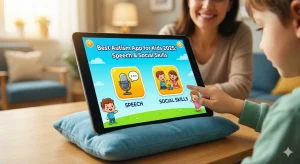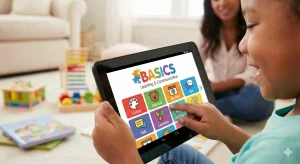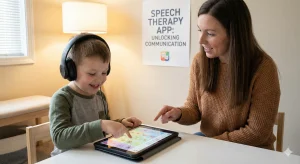15 Easy OT Activities for Hand and Finger Strengthening at Home
By Wellness Hub
Last Updated: August 20, 2025
Is your child struggling to hold a pencil, cut with scissors, or finish a coloring page without getting tired? Weak hand and finger muscles often make everyday tasks frustrating for little ones. The good news is—you don’t need fancy tools or clinic visits to help. With just a few minutes a day and simple household items, you can strengthen your child’s fine motor skills right at home.
In this guide, we’ll share 15 occupational therapist–approved hand and finger strengthening activities that are fun, engaging, and designed specifically for kids ages 3–7. These playful exercises support pencil control, scissor skills, and early writing readiness—while boosting independence and confidence in daily life.
Help Your Child Grow Strong
Build your child’s motor, sensory, and daily living skills with expert occupational therapy—online, flexible, and empowering.
Why Hand and Finger Strength Matters for Fine Motor Skills in Preschoolers
Strong hand and finger muscles form the base for every fine motor skill your child needs. When those muscles are weak, daily tasks become harder than they should be. Parents often notice it when homework turns into a struggle, coloring is avoided, or scissor work ends in frustration.
1. Writing and Pencil Grip: How to Strengthen Pencil Control at Home
A secure pencil grip—often called the tripod grasp—requires strength in the small muscles of the hand. Without it, kids press too hard, tire quickly, or scribble instead of writing neatly. Weakness here makes even tracing letters or finishing schoolwork exhausting.
2. Cutting and Craft Activities: Occupational Therapy Exercises for Scissor Skills
Scissors demand control and coordination. Children with low hand strength may snip randomly, cut unevenly, or refuse to cut at all. This limits their ability to join in class crafts, holiday projects, or even simple at-home art time.
3. Eating, Dressing, and Everyday Tasks That Need Fine Motor Skills
Hand strength doesn’t just show up at the desk. It’s needed for holding a fork, buttoning a shirt, zipping a jacket, or squeezing toothpaste. When fine motor skills lag, kids need extra help with self-care, and independence suffers.
Why It Matters for Parents
For parents, weak hand muscles often reveal themselves in daily battles:
- A child avoiding coloring books or puzzles.
- Homework that drags on because writing feels like hard work.
- Tears when faced with tasks like cutting or buttoning.
Occupational Therapy Connection
Occupational therapy focuses on building these essential fine motor skills. Simple strengthening activities can change a child’s experience with writing, self-care, and play. With the right exercises at home, parents can support progress in both classroom performance and everyday independence.
Signs Your Child May Need Hand Strengthening and Fine Motor Support
Strong hands and fingers help kids write, cut, eat, and dress with ease. If your child struggles in these areas, it may be a sign they need extra support with hand and finger strengthening. Here are some key things to watch for:
1. Avoids Coloring or Crafts
If your child resists coloring, drawing, or doing craft activities, it often means their hand muscles fatigue quickly. Instead of enjoying creative play, they may avoid it altogether because it feels hard to control the pencil or crayons.
2. Tires Quickly While Writing
Does your child stop after writing only a few words? Quick fatigue is a clear sign of weak fine motor endurance. Strong fingers help children maintain grip and pressure without tiring out.
3. Difficulty Using Scissors or Squeezing Objects
Cutting paper, squeezing glue bottles, or even opening snack packets all require strong finger muscles. If your child struggles with these, it often shows their grip and pinch strength need improvement.
4. Poor Pencil Grip
An immature grasp, such as holding the pencil with the whole hand or wrapping too many fingers around it, signals weak finger coordination. A strong tripod grasp (using the thumb, index, and middle fingers) is needed for neat writing and drawing.
5. Over-Reliance on One Hand
Children should use both hands together for activities like holding paper while cutting or stabilizing objects while building. If your child avoids using one hand or struggles with bilateral coordination, it may point to weaker muscles and poor fine motor control.
How Hand and Finger Strengthening Supports Pre-Writing Skills
Strong fingers do more than make play easier—they set the stage for writing success. Occupational Therapy–approved activities turn simple play into learning opportunities that prepare your child for the classroom. Here’s how strengthening hand and finger muscles builds pre-writing skills:
- Supports Bilateral Hand Use
Tearing paper, clipping clothespins, or zipping jackets encourage both hands to work together—just like when one hand steadies paper while the other writes. - Builds Endurance for Classroom Tasks
Activities like squeezing sponges or kneading playdough improve stamina, so your child can write, color, or trace without tiring quickly. - Enhances Grip Strength and Coordination
Fun exercises such as clothespin pressing or bubble wrap popping strengthen the small hand muscles, supporting a steady tripod grasp for better pencil control. - Improves In-Hand Manipulation
Tasks like rolling playdough or sorting snacks with tongs train kids to move small objects within their palms, an essential skill for shifting a pencil while writing. - Develops Control for Pencil Pressure
Squeezing stress balls or using spray bottles teaches children to adjust pressure, helping them avoid shaky letters or torn paper.
The Role of Occupational Therapy at Home
You don’t need expensive therapy tools to help your child. Everyday household objects—like playdough, clothespins, sponges, or spray bottles—can become powerful therapy resources. Home occupational therapy turns regular routines into meaningful learning opportunities.
Occupational therapists at Wellness Hub recommend play-based activities because children learn best when they’re engaged and having fun. Instead of drills or rigid exercises, home Occupational Therapy encourages games, crafts, and pretend play that naturally build strength, coordination, and confidence.
Doing these activities at home also brings lasting benefits:
- Consistency: Daily practice reinforces skills and ensures steady progress.
- Bonding: Parents and children work together, building trust and creating joyful shared moments.
- Progress Tracking: Parents can see small improvements every week—from stronger grips to smoother handwriting—without waiting for clinic sessions.
At Wellness Hub, our therapists design parent-friendly strategies that fit easily into busy family life. With the right guidance, you can turn ordinary playtime into therapy time, supporting your child’s independence step by step.
15 OT-Approved Hand and Finger Strengthening Activities for Preschoolers at Home
Strengthening your child’s hands and fingers at home doesn’t need expensive equipment. These therapist-approved Occupational Therapy activities use simple materials to build fine motor skills, improve pencil grip, and prepare kids for school success.
Here’s a table of 15 powerful activities designed by occupational therapists at Wellness Hub:
| Activity | Benefit for Kids | How It Helps in Daily Life |
|---|---|---|
| 1. Playdough or Theraputty Exercises – Builds finger strength & dexterity | Enhances finger and palm muscles | Improves control for writing and coloring |
| 2. Sponge Squeezing – Great for hand endurance | Strengthens the whole hand | Helps with brushing teeth and using cutlery |
| 3. Clothespin Pressing – Improves pincer grasp | Builds thumb-index strength | Supports holding pencils and feeding with a fork |
| 4. Crumpling Paper – Strengthens palm arches | Develops finger flexion | Builds strength for buttoning clothes |
| 5. Squeeze Balls – Builds grip strength | Strengthens palm and forearm | Improves handwriting pressure and jar opening |
| 6. Spray Bottle Games – Enhances finger extension | Works on thumb, index, and middle fingers | Supports handwriting endurance and scissor cutting |
| 7. Rubber Band Stretching – Targets resistance control | Strengthens intrinsic hand muscles | Improves grip stability and typing |
| 8. Tearing Paper – Boosts bilateral coordination | Strengthens both hands working together | Improves dressing and zipper use |
| 9. Bubble Wrap Popping – Fun way to build fine motor skills | Builds finger isolation | Helps with precise control in writing |
| 10. Hole Punching – Strengthens hand muscles for writing pressure | Improves grip and coordination | Supports consistent handwriting |
| 11. Lifting Heavy Items – Improves overall hand stability | Strengthens arms and hands together | Prepares for carrying school bags |
| 12. Eye Dropper Play – Builds precision and control | Strengthens finger pressure control | Improves coloring within lines and crafts |
| 13. Toy Tools (wrenches, screwdrivers) – Functional strength for real-life tasks | Builds grip rotation and pressure control | Prepares for independence in real tasks |
| 14. Velcro Pulls – Encourages grip release control | Strengthens bilateral pulling | Helps in dressing tasks with Velcro shoes and jackets |
| 15. Snack Sorting with Tongs – Supports pre-writing skills | Builds grip and coordination | Improves utensil handling and pencil readiness |
Why These Activities Work
Each activity targets fine motor strength, endurance, and coordination. By adding them into daily play, crafts, or chores, you help your child build independence for:
- Writing and coloring
- Cutting with scissors
- Dressing and buttoning
- Eating with utensils
Wellness Hub Tip for Parents
Keep these activities fun—never force repetitions. Engagement builds strength faster than drills. Add a playful twist: race against the clock, create patterns, or include favorite toys.
Explore the full collection of therapist-designed Occupational Therapy resources at Wellness Hub.
Everyday Moments for Hand Strengthening: Simple OT Activities at Home
Strong hand and finger skills don’t have to come from structured therapy sessions alone. The best progress happens when parents weave practice into daily routines—making it fun, natural, and stress-free.
1. Turn Playtime Into Therapy
Simple play activities build strength when used with intention. Encourage your child to squeeze playdough, snap building blocks together, or pop bubble wrap during play. These playful moments strengthen little hands while keeping kids engaged and happy.
2. Add Fine Motor Work to Craft Time
Crafts are perfect for boosting grip and control. Invite your child to tear colorful paper, use scissors on shapes, or squeeze glue bottles during art projects. Every cut, press, and tear strengthens the fingers needed for writing and independence.
3. Sneak Skills Into Snack Prep
Daily tasks like snack prep can double as therapy. Let your child peel an orange, use tongs to pick up snacks, or pour water from a small jug. These small movements create meaningful practice while building real-life independence.
4. Consistency Creates Progress
Children improve when activities become consistent—not forced. A few minutes every day works better than long, repetitive drills. Keep sessions short, fun, and rewarding so your child enjoys the process. Over time, these habits create lasting strength and confidence.
The Positive Impact on Your Child: School Readiness and Daily Independence
How Small Actions Build Independence
Every squeeze, pinch, and press strengthens your child’s little hands. These simple Occupational Therapy activities create the muscle control needed for daily life. When your child crumples paper, pops bubble wrap, or squeezes a sponge, they aren’t just playing—they are building the power to write, draw, and manage school tasks with ease.
Strong hands mean more than neat handwriting. They give your child the confidence to zip a jacket, button a shirt, and carry a backpack without help. Each tiny action adds up to a big step toward independence.
Connection to School Readiness and Everyday Self-Care
Hand and finger strength directly supports school success. A steady pencil grip, scissor control, and the endurance to finish classwork all depend on fine motor power. Children who build these skills early find classroom activities less frustrating and more enjoyable.
Beyond academics, these exercises prepare your child for self-care. Brushing teeth, opening lunchboxes, or using utensils at mealtime all rely on strong hand muscles. Independence in these routines builds confidence, reduces reliance on adults, and sets the stage for lifelong skills.
By weaving these activities into play, you give your child an advantage—ready for school, ready for life, and ready to grow with confidence.
Real-Life Impact — From Struggles to Success
The progress may look small, but these little wins add up to life-changing independence. When kids build hand and finger strength, they move from daily struggles to everyday success. Here are some powerful milestones parents often notice:
| Milestone | How Hand Strength Helps |
|---|---|
| Writing their name | Strong fingers improve pencil control, making writing smoother and less tiring. |
| Buttoning a shirt | Better grip and finger coordination make dressing up simple and stress-free. |
| Zipping a jacket | Hand endurance and bilateral coordination allow kids to zip confidently. |
| Opening containers | Improved palm strength and precision grip give kids the independence to handle snacks or school supplies. |
Why These Wins Matter
Each activity may look like play, but it builds the strength kids need for school readiness, self-care, and confidence. Small daily exercises become stepping stones toward bigger achievements—helping children grow independent, resilient, and ready to thrive.
Therapist Advice — What to Avoid
When strengthening your child’s hand and finger muscles, the right approach matters as much as the activities themselves. Here are key therapist-backed tips from Wellness Hub to keep practice fun, stress-free, and effective:
| What to Avoid | Why It Matters | Better Approach |
|---|---|---|
| Don’t pressure or over-correct | Pressure makes kids anxious and resistant. | Encourage play, celebrate small wins, and let them enjoy the process. |
| Avoid over-repetition | Too much repetition causes boredom and frustration. | Mix up activities—rotate playdough, clothespins, or spray bottle games. |
| Let your child lead the pace | Rushing slows progress and lowers motivation. | Follow your child’s rhythm; even a few minutes daily builds strength. |
| Focus on engagement over perfection | Perfect form isn’t the goal—consistent practice is. | Keep activities playful, creative, and connected to real-life skills. |
Why This Matters for Parents
Children build strength best through playful, engaging, and low-stress experiences. By avoiding pressure and focusing on fun, you set the stage for real progress—better pencil grip, stronger hands, and more confidence in daily life.
All these strategies are part of therapist-designed Occupational Therapy resources at Wellness Hub, created to make home therapy simple, effective, and enjoyable for parents and kids.
Conclusion
Building your child’s hand and finger strength at home is simple, fun, and effective. You don’t need expensive equipment or long therapy sessions—just a few playful minutes each day. Every squeeze, pinch, or pull adds up, helping your child write with ease, button their clothes, and feel more independent.
When you guide your child with the right activities, you set them up for confidence in school and daily life. The best part? These moments of play also become moments of connection between you and your child.
Start small, stay consistent, and watch your child grow stronger one activity at a time. For step-by-step Occupational Therapy resources created by experts, explore Wellness Hub—your trusted partner in child development.
Frequently Asked Questions
1. What are the best hand strengthening activities for kids at home?
The best hand strengthening activities for kids are simple, play-based, and use everyday items. Some of the most effective include playdough exercises, squeezing sponges, pressing clothespins, tearing paper, and popping bubble wrap. These activities improve grip, dexterity, and finger endurance—all essential for writing and self-care skills.
2. How do weak hand muscles affect my child’s writing skills?
Weak hand and finger muscles can make it hard for a child to hold a pencil properly, press with the right pressure, or write for long periods without tiring. This often leads to messy handwriting, slower work speed, and frustration with school tasks. Strengthening hand muscles helps children develop control and stamina for better writing.
3. Can occupational therapy activities improve pencil grip?
Yes. Occupational therapy activities target the small hand muscles needed for a strong tripod grasp (the way we hold a pencil). Exercises like clothespin squeezing, tongs play, and putty pulling strengthen finger muscles, making it easier for children to develop a stable pencil grip for writing.
4. What are simple finger strengthening exercises for preschoolers?
Preschool-friendly exercises include:
- Rolling and squishing playdough
- Using spray bottles to “water plants”
- Sorting snacks with tongs
- Popping bubble wrap
These activities are fun, safe, and help children build fine motor strength before they begin formal writing.
5. How can I help my child with fine motor skills at home?
You can support fine motor development through everyday play and chores. Encourage your child to cut paper, squeeze bath toys, tear old newspapers, or use eye droppers in water play. The key is to make it enjoyable so your child builds strength naturally without feeling like it’s “work.”
6. Is playdough good for hand and finger strengthening?
Yes! Playdough is one of the best tools for hand strengthening. Children can pinch, roll, flatten, and pull it apart, which works all the small muscles in the fingers and palms. Adding beads or small toys inside for your child to “dig out” makes it even more challenging and fun.
7. How do tongs or clothespins help with pre-writing readiness?
Tongs and clothespins require children to use their thumb, index, and middle fingers—the same muscles used for holding a pencil. Repeated practice with these tools builds the strength and coordination needed for a strong pencil grasp and better control during writing.
8. When should I worry about my child’s hand strength development?
You should consider seeking help if your child:
- Consistently avoids coloring, cutting, or writing
- Struggles to use utensils or fasten buttons
- Tires very quickly during fine motor tasks
If these difficulties persist after trying at-home strengthening activities, consulting an occupational therapist is recommended.
9. Can these OT exercises help with cutting and scissor skills?
Yes. Scissor use requires strong fingers, hand endurance, and bilateral coordination (using both hands together). Activities like clothespin pressing, playdough squeezing, and hole punching prepare the hand muscles needed for smooth, controlled scissor cutting.
10. What everyday household items can strengthen finger muscles in kids?
You don’t need special equipment. Common items like clothespins, spray bottles, sponges, bubble wrap, tongs, eye droppers, and Velcro strips are excellent tools for finger strengthening. Turning daily routines into playful exercises makes it easy to build skills at home.
About the Author
Sonali Sharma, Occupational Therapist
Sonali Sharma is a skilled Occupational Therapist at Wellness Hub, with over three years of experience in supporting children with developmental, behavioral, and learning challenges. She holds a Bachelor’s in Occupational Therapy (BOT) from Amity University and has worked with leading institutions such as NIMHANS Bengaluru and ESIC Hospital Faridabad.
At Wellness Hub, Sonali provides online occupational therapy sessions tailored to each child’s needs. She specializes in pediatric therapy, autism support, sensory integration, and developmental skill-building, helping children strengthen motor skills, improve focus, and become more independent in daily life.
Her therapy style is child-centered, play-based, and evidence-driven—making sessions both effective and enjoyable for kids. Sonali also equips parents with practical home therapy strategies to extend progress beyond sessions.
Passionate about empowering families, Sonali believes in creating a nurturing space where children can thrive while parents feel supported every step of the way.
Book your Free Consultation Today
Parent/Caregiver Info:
Client’s Details:
* Error Message








